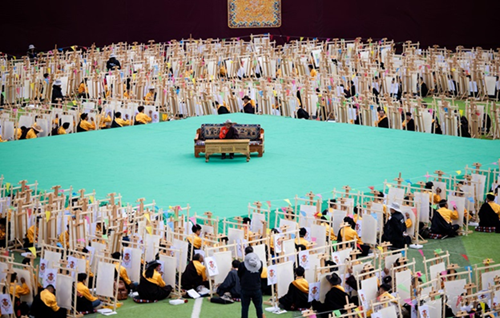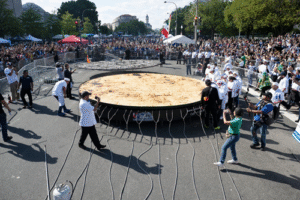In an extraordinary cultural spectacle, more than 1,000 Thangka painters from across Tibet and neighbouring regions gathered in Chamdo this week, marking one of the largest collective celebrations of traditional Tibetan art in recent history. The event, held in the heart of Chamdo’s cultural district, aimed to preserve, promote, and pass on the centuries-old tradition of Thangka painting — a sacred art form that embodies the spiritual and cultural identity of Tibet.
Thangka, a Buddhist scroll painting rich in symbolism, is considered a bridge between devotion and artistry. Traditionally crafted using natural minerals, handmade brushes, and silk canvases, each Thangka demands extreme precision, patience, and spiritual understanding. For generations, these masterpieces have served as teaching tools, meditation aids, and sacred offerings across monasteries and Tibetan households.
The gathering brought together veteran masters, young apprentices, and independent artisans, creating a vibrant environment where talent, tradition, and technique could flow freely across generations. Over the course of several days, artists collaborated on large community canvases, exchanged knowledge, and engaged with visitors eager to witness the delicate process behind this ancient craft.
Master artists demonstrated rare techniques such as:
Gold detailing with crushed gemstones
Natural pigment preparation using minerals and herbs
Sacred iconography drawing based on Buddhist scriptures
Large tents were set up for live painting sessions, where the public could observe the creation of Thangka art from the first brushstroke to the final blessing.
Local cultural officials hailed the event as a milestone in the preservation of Tibetan intangible cultural heritage. Many noted that, in recent years, the demand for authentic Thangka art has risen globally, but so has the need to protect the integrity and originality of the craft.
The gathering also focused on training the next generation of artists. Workshops were organized for young students, allowing them to learn under the guidance of master painters — some with more than 40 years of experience.
Thangka art plays a significant role in the local economy. Chamdo, known for its deep artistic roots, attracts both collectors and spiritual practitioners. This event is expected to boost tourism, support artisan livelihoods, and reinforce Chamdo’s reputation as a cultural epicenter of Tibet.
Organizers announced that several collaborative artworks created during the event will be showcased in international exhibitions over the next year, bringing Tibetan heritage to a global audience.
We are not just painting — we are protecting our identity,” said one senior artist participating in the event.
Another young apprentice shared, “This is the first time I’ve worked alongside so many masters. I feel like I’m touching history.
As the event concluded, thousands of visitors witnessed a final ceremony where artists offered their completed Thangkas to local monasteries, symbolizing the union of art, spirituality, and community.
Chamdo’s streets, decorated with vibrant prayer flags and traditional music, echoed a powerful message:
Tibetan culture lives on — not in books, but in the hands and hearts of its people.







